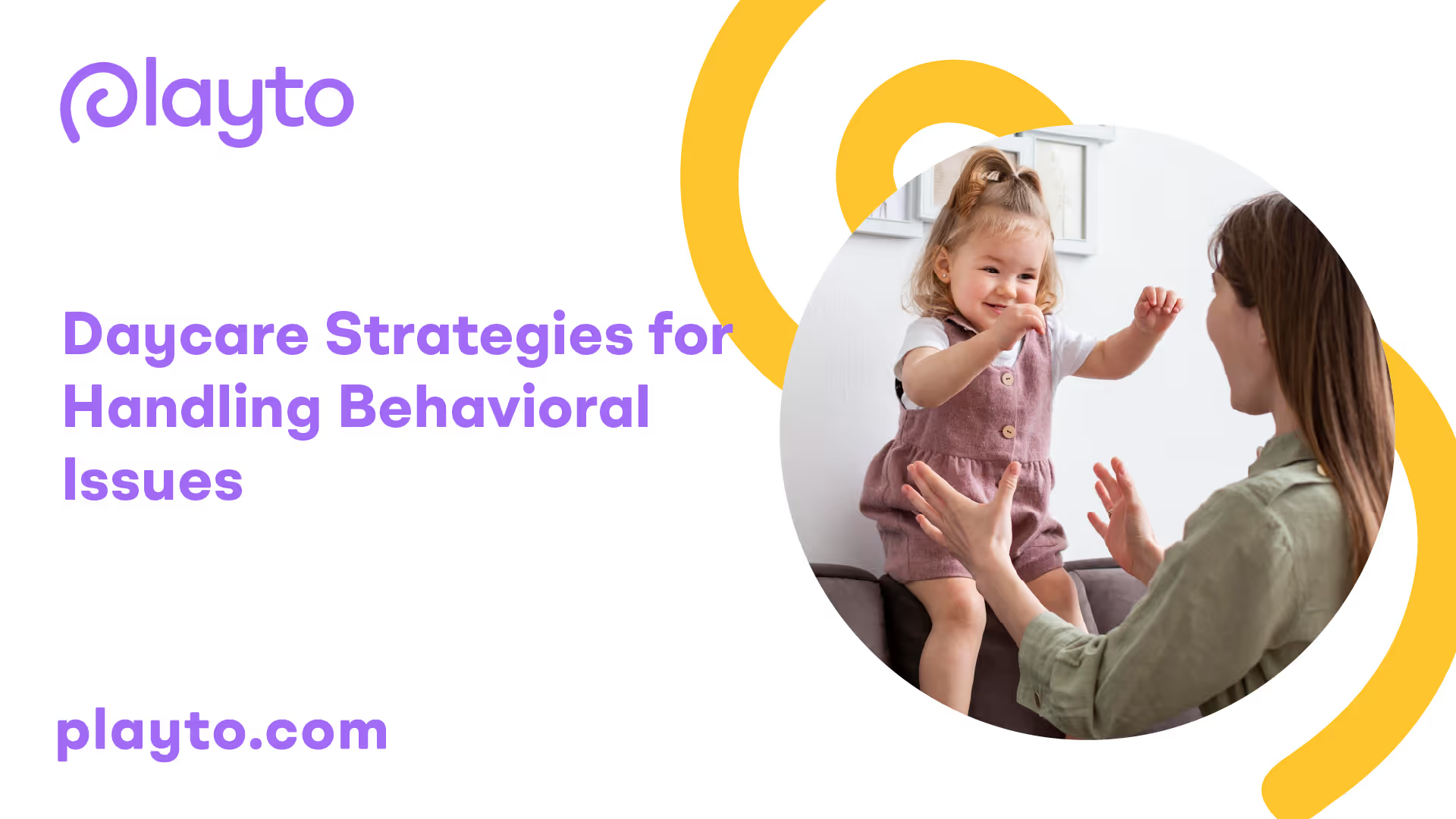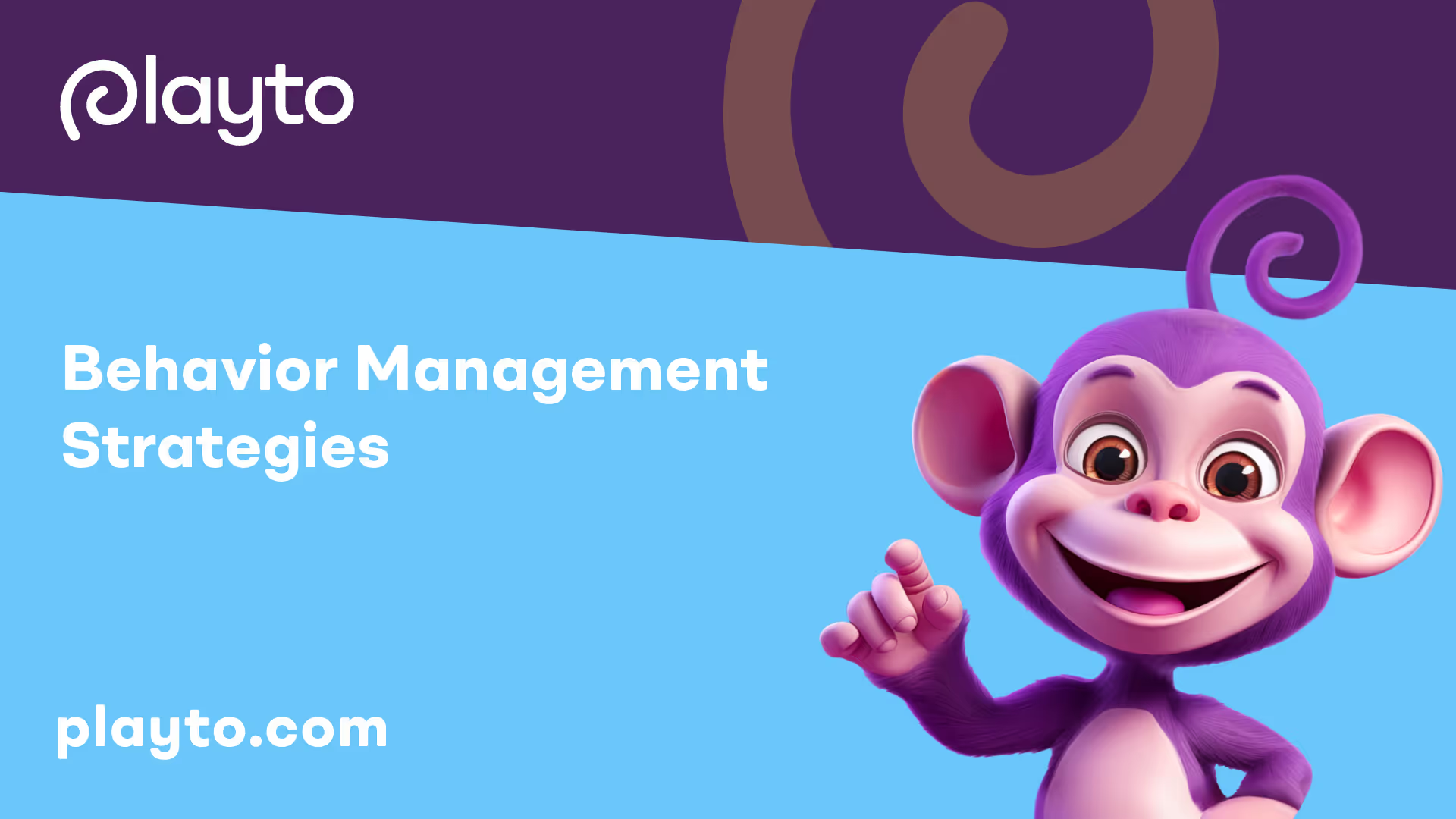
Effective Daycare Strategies
When it comes to handling behavioral issues in daycare settings, implementing effective strategies is key to creating a positive and supportive environment. Two crucial strategies include collaborating with childcare providers and setting clear behavior expectations.
Collaborating with Childcare Providers
Childcare providers can be a valuable source of support in addressing challenging behaviors in children. Collaborating with the provider to develop consistent strategies can lead to successful outcomes for the child [1]. By working together, teachers and providers can share observations and insights about the child's behavior, allowing them to develop targeted interventions that address specific needs.
Through open and regular communication, teachers and providers can exchange information about the child's progress, challenges, and any changes in behavior. This collaborative approach promotes a unified approach to behavior management, ensuring consistency and continuity in addressing behavioral issues.
Setting Clear Behavior Expectations
In daycare settings, setting clear behavior expectations is crucial for maintaining a safe and orderly environment. Specific, observable, and measurable expectations help children understand what is expected of them and create a foundation for positive behavior [2].
Teachers should clearly communicate these expectations to the children, using age-appropriate language and visual cues whenever possible. Visual aids such as charts or posters can serve as helpful reminders of expected behavior. Consistency in enforcing these expectations is essential to reinforce positive behavior and prevent negative behaviors from developing.
By setting clear behavior expectations, daycare providers create a structured environment that promotes a sense of security and predictability for the children. This, in turn, helps to establish positive relationships between the children and the staff, fostering a supportive and nurturing atmosphere.
By collaborating with childcare providers and setting clear behavior expectations, daycare settings can effectively address and manage behavioral issues. These strategies provide the foundation for creating a positive and conducive environment for the children's overall development and well-being. For more daycare strategies, check out our articles on daycare strategies for fostering curiosity and daycare strategies for handling homesickness.

Positive Reinforcement Techniques
When it comes to managing behavioral issues in daycare settings, positive reinforcement techniques play a crucial role in promoting good behavior and creating a supportive learning environment. Two effective strategies for encouraging positive behavior are through praise and the rational detachment approach.
Encouraging Good Behavior through Praise
Praising children and providing positive attention is an essential approach for daycare teachers. Specific praise and sincere acknowledgment of positive behavior can help reinforce good conduct in students. By offering specific and descriptive praise, teachers can effectively show children what behavior is praiseworthy and motivate them to continue exhibiting good behavior.
When praising children, it's important to be genuine and specific. Instead of generic statements like "good job," provide feedback that highlights the specific behavior or action that deserves recognition. For example, saying "Great job sharing your toys with your friends during playtime" or "I appreciate how you listened attentively during storytime" provides clear examples of the behavior that is being recognized and encourages children to continue engaging in positive actions.
Rational Detachment Approach
Another effective positive reinforcement technique is the rational detachment approach. This approach involves maintaining a calm and composed demeanor when dealing with challenging behaviors. By staying emotionally detached from the child's negative behavior, daycare providers can model appropriate behavior and help children understand the impact of their actions.
When using the rational detachment approach, it's important to address unwanted behaviors calmly and consistently. Instead of reacting emotionally or becoming frustrated, teachers should respond with a composed and empathetic approach. This helps children understand that their behavior is not eliciting an emotional response and encourages them to adopt more positive behaviors.
By using the rational detachment approach, daycare providers can create a safe and supportive environment for children to learn and grow. This approach teaches children how to manage their emotions and make better choices while promoting a positive and respectful atmosphere within the daycare setting.
Implementing positive reinforcement techniques like praise and the rational detachment approach can be highly effective in managing behavioral issues in daycare settings. By encouraging and acknowledging good behavior, daycare providers can create a positive learning environment where children feel valued and motivated to exhibit positive conduct.

Behavior Management Strategies
In a daycare setting, effective behavior management strategies are essential for maintaining a positive and conducive environment for children. Two key strategies that daycare providers can employ are active ignoring for mild misbehavior and establishing and enforcing consequences.
Active Ignoring for Mild Misbehavior
Discouraging mild misbehavior through active ignoring, also known as selective ignoring, can be an effective strategy to extinguish unwanted behavior [2]. This approach involves consciously ignoring the misbehaving child while continuing to interact with other children in the class. By not giving attention or reinforcement to the misbehavior, it becomes less rewarding for the child, thus decreasing the likelihood of its recurrence.
It's important to note that active ignoring should only be used for behaviors that are minor in nature and do not pose immediate harm to the child or others. By redirecting attention towards positive behavior and engaging with other children, daycare providers can encourage the misbehaving child to model appropriate behavior and seek positive attention.
Establishing and Enforcing Consequences
Establishing and enforcing consequences is a vital behavior management strategy for daycare teachers [2]. By setting clear expectations and consistently applying consequences, daycare providers can help children understand the difference between appropriate and disruptive behavior.
Consequences should be tailored to individual children and should be known in advance. This allows children to have clarity about the expected outcomes of their behavior and encourages self-regulation. Consistency is key when applying consequences, as it helps children understand the cause-and-effect relationship between their actions and the resulting consequences.
Consequences should also be proportional to the behavior exhibited. This means that the consequences should match the severity of the misbehavior, ensuring that they are fair and encourage growth and learning. By establishing and enforcing consequences, daycare providers can create a structured and predictable environment that fosters positive behavior and discourages disruptive actions.
Understanding and implementing these behavior management strategies can contribute to a harmonious and productive daycare environment, promoting the well-being and development of the children in their care. For additional daycare strategies, you may also be interested in our articles on daycare strategies for fostering curiosity and daycare strategies for handling homesickness.
Structured Environment Benefits
In a daycare setting, creating a structured environment can have numerous benefits when it comes to managing behavioral issues. By implementing routines and schedules, childcare providers can provide children with a sense of security, leading to confidence, happiness, and good behavior. Routines help guide children through daily actions in fun and memorable ways, keeping them excited to follow instructions [3].
Importance of Routines and Schedules
Establishing consistent routines and schedules is essential for promoting positive behavior in children. When children know what to expect and when to expect it, they feel more secure and in control. This can help reduce anxiety and minimize disruptive behaviors that may arise from uncertainty or lack of structure.
Bedtime routines, for example, play a crucial role in creating a structured environment. A consistent routine can help children calm down and prepare for sleep, reducing stress and misbehavior associated with bedtime [4]. By following a predictable sequence of activities, such as brushing teeth, reading a story, and turning off lights, children understand what is expected of them and are more likely to cooperate.
Creating a Reward System
Another effective strategy for managing behavior in a daycare setting is to create a reward system. This can be in the form of a reward menu or chart that visually reinforces the idea that positive behavior is valued. The reward system helps children understand the connection between their actions and rewards, encouraging them to strive for good behavior and learn to progress toward goals over time [3].
The reward system can be personalized to suit the needs of the children and the daycare environment. It could include small incentives such as stickers, tokens, or points that can be accumulated and exchanged for a special privilege or a larger reward. The key is to make the reward system clear and consistent, ensuring that children understand the expectations and the potential benefits of their positive behavior.
By implementing a structured environment with routines and schedules, as well as a reward system, daycare providers can create a positive and consistent framework for behavior management. These strategies help children feel secure and motivated, enabling them to develop good behavior habits. For more information on other daycare strategies, check out our articles on daycare strategies for fostering curiosity and daycare strategies for handling homesickness.
Insights from Research Studies
To gain a deeper understanding of effective daycare strategies for handling behavioral issues, it is essential to explore insights from research studies. These studies provide valuable insights into the impact of daycare on behavioral development and the importance of communication with parents for better behavior understanding.
Impact of Daycare on Behavioral Development
Research studies have examined the impact of daycare on children's behavioral development. While the findings can vary, some studies have indicated that the more time children spend in external daycare, the more likely they are to exhibit problematic behavior, such as aggression, symptoms of ADHD, anxiety, and depression, especially if they attended a daycare center before entering school. It's worth noting that this behavior tends to disappear by the age of 13 [5].
Additionally, primary school pupils who spent more than two days a week with a daycare mother or at least three days a week in a playgroup were more likely to exhibit hyperactivity, lack of impulse control, inattention, or aggression, according to teachers' assessments. This suggests a potential link between external daycare settings and problematic behavior in primary school-aged children [5].
However, it's important to interpret these findings with caution. The observed problematic behavior might be influenced by various factors, including the child's individual characteristics, the quality of daycare, and interactions with peers and caregivers. It's crucial to consider each child's unique needs and circumstances when assessing the impact of daycare on their behavioral development.
Communication with Parents for Behavior Understanding
Effective communication between daycare providers and parents plays a vital role in understanding and addressing behavioral issues. By maintaining open lines of communication, daycare providers can gain valuable insights into a child's behavior at home and collaborate with parents to develop consistent strategies.
When parents and daycare providers share information about a child's behavior, it becomes easier to identify patterns, triggers, and potential underlying factors contributing to the behavioral issues. This shared understanding allows for a more comprehensive approach to behavior management and intervention.
Regular communication can take various forms, including informal conversations, progress reports, and scheduled meetings. By establishing effective communication channels, parents and daycare providers can work together as a team to support the child's behavioral development. This collaboration enhances consistency in behavior expectations, strategies, and reinforcement techniques, providing a more holistic approach to addressing behavioral issues.
It's important to note that daycare providers should maintain confidentiality and respect the privacy of each family. Open and respectful communication fosters a trusting relationship and ensures that parents feel heard and involved in their child's daycare experience.
In conclusion, research studies provide valuable insights into the impact of daycare on behavioral development and the significance of communication with parents. By considering these insights, daycare providers can implement effective strategies to address behavioral issues and create a supportive environment for children's overall well-being.
.avif)